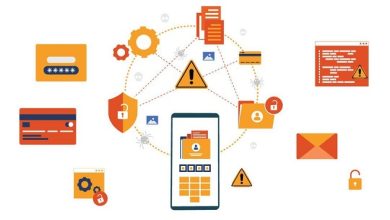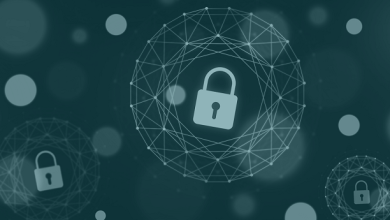Navigating the Future: The Ultimate Guide to SASE Solutions for Global Cybersecurity

It’s crucial to keep up with the ever-changing world of cybersecurity and develop a strong defense plan to combat emerging threats. By doing so, we can ensure the safety and security of our digital assets. Secure Access Service Edge (SASE) solutions have emerged as a transformative force in global cybersecurity, offering a comprehensive approach to secure network access for organizations worldwide. This guide delves into the intricate world of SASE, exploring its fundamental principles, key components, benefits, and role in shaping the future of cybersecurity on a global scale.
Understanding the Foundations of SASE
Defining SASE:
Secure Access Service Edge, commonly known as SASE, represents a revolutionary paradigm shift in cybersecurity architecture. At its core, SASE converges network security services with wide-area networking (WAN) capabilities to support modern enterprises’ dynamic, cloud-centric needs. This solution simplifies security protocols and improves network performance for global organizations.
Cloud-Native Architecture:
Central to SASE is its cloud-native architecture. Unlike traditional security models relying on data center-centric approaches, SASE leverages cloud services to deliver security functions, ensuring scalability, flexibility, and agility. This cloud-native approach aligns seamlessly with the modern business landscape, where remote work, mobile devices, and cloud applications are integral components.
Critical Components of SASE Solutions
Zero Trust Security Model:
SASE adopts a zero-trust security model, assuming that no entity, whether inside or outside the organization, should be trusted by default. Every user, device, or application attempting to access the network undergoes continuous verification, minimizing the risk of unauthorized access and lateral movement in case of a breach.
Software-Defined Wide Area Networking (SD-WAN):
SD-WAN is a fundamental component of SASE, allowing organizations to create a dynamic, efficient, and secure network infrastructure. By optimizing traffic routing based on real-time conditions, SD-WAN enhances network performance while maintaining a robust security posture.
Identity-Centric Security:
SASE emphasizes identity-centric security, focusing on the user as the new security perimeter. With the proliferation of remote work and the use of personal devices, authenticating and authorizing users based on their identity becomes crucial. This approach ensures access is granted based on a user’s identity and context, reducing the risk of unauthorized access.
Integrated Security Services:
SASE consolidates multiple security services into a unified framework. These services include secure web gateways, firewall-as-a-service, data loss prevention, and more. By integrating these services, organizations can achieve a comprehensive security posture without the complexity of managing disparate security solutions.
Benefits of SASE Solutions for Worldwide Cybersecurity
Global Reach and Scalability:
One of the inherent advantages of SASE solutions for worldwide cybersecurity is their ability to scale globally. With a cloud-native architecture, organizations can extend their security perimeter seamlessly to cover users and branch offices worldwide. This global reach ensures consistent security policies and threat prevention regardless of the user’s location.
Improved User Experience:
SASE enhances the user experience by providing secure and efficient access to applications and data. SD-WAN integration allows for optimal routing, reducing latency and ensuring a smooth user experience, even for geographically dispersed teams.
Cost-Efficiency and Resource Optimization:
SASE solutions offer cost-efficiency and resource optimization by leveraging cloud services and consolidating security functions. Embracing a pay-as-you-go model is highly advantageous for organizations, as it helps reduce the burden of costly hardware investments and maintenance expenses with traditional security infrastructure.
Adaptability to Evolving Threat Landscape:
The dynamic nature of the cybersecurity landscape requires adaptive solutions. SASE’s cloud-native architecture allows for continuous updates and improvements to security services, ensuring organizations can stay ahead of emerging threats and vulnerabilities.
Enhanced Compliance and Governance:
In an era of stringent data protection regulations, SASE aids organizations in maintaining compliance and governance standards. Identity-centric security measures and integrated security services contribute to a robust security framework that aligns with various regulatory requirements.
Implementing SASE Solutions: Best Practices
Assessment and Planning:
Before embarking on the SASE journey, organizations should comprehensively assess their current network architecture, security posture, and user requirements. This assessment forms the basis for strategic planning, ensuring a smooth transition to SASE.
User Education and Training:
Successful implementation of SASE requires not only technological readiness but also user awareness. Organizations should invest in education and training programs to familiarize users with the new security protocols and ensure adherence to best practices.
Collaboration with Trusted Providers:
Partnering with reputable SASE solution providers is crucial for a successful implementation. Trusted vendors can offer expertise, support, and ongoing updates to ensure the SASE solution remains resilient against evolving cyber threats.
Continuous Monitoring and Optimization:
The cybersecurity landscape is ever-changing, and organizations must adopt a proactive approach. It is crucial to continuously monitor network traffic, user activities, and security events to ensure the safety and security of the system. Additionally, organizations should optimize their SASE configurations to align with evolving business needs and security requirements.
The Future of Cybersecurity: SASE and Beyond
As organizations worldwide embrace digital transformation and the constantly changing nature of work, the significance of a strong and flexible cybersecurity framework cannot be overstated. SASE solutions offer a comprehensive and forward-looking approach, aligning seamlessly with the demands of the modern business landscape. By combining cloud-native architecture, Zero Trust principles, and integrated security services, SASE provides a roadmap for navigating the future of global cybersecurity. As threats evolve and technology advances, SASE stands as a beacon of innovation, ensuring that organizations can safeguard their digital assets and adapt to the challenges of the dynamic cybersecurity landscape. In the journey to secure access and data in an interconnected world, SASE emerges as a solution and a strategic imperative for organizations aiming to fortify their cybersecurity defenses globally.
The Female Delusion Calculator is a viral phenomenon that has gained traction on social media. It originated as a satirical tool to challenge unrealistic beauty standards and has sparked widespread controversy. The calculator aims to shed light on the societal pressures faced by women and the impact of these expectations on their self-image. Public reaction to the Female Delusion Calculator has been mixed, with some praising its message and others criticizing it for perpetuating negative stereotypes. The controversy surrounding the calculator has sparked important conversations about body positivity and the need for more inclusive representations of beauty in the media.





